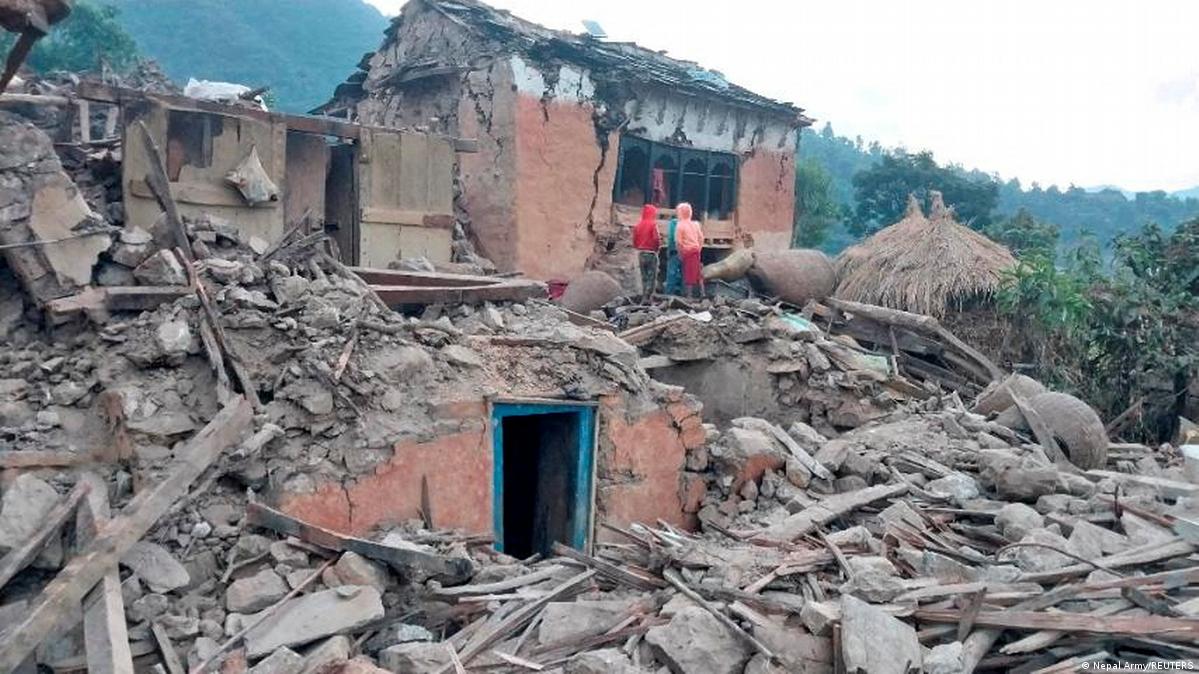Powerful 5.6-Magnitude Earthquake Shakes Nepal, Sends Tremors Across Delhi-NCR and Northern India

Powerful 5.6-Magnitude Earthquake Shakes Nepal, Sends Tremors Across Delhi-NCR and Northern India
In a significant seismic event, a powerful 5.6-magnitude earthquake struck Nepal, causing widespread tremors that reverberated through the heart of India’s capital region, Delhi-NCR, and neighboring northern states. The National Center for Seismology confirmed the occurrence, raising concerns about the region’s susceptibility to seismic activity, as just last week, a devastating 6.4-magnitude earthquake left a trail of destruction and claimed over 150 lives in Nepal.
The Quaking Earth:
The tremors, which occurred on [Insert Date], at [Insert Time], rattled Nepal and its surrounding regions, putting the spotlight on the inherent geological vulnerability faced by this Himalayan nation. Situated within one of the world’s most active tectonic zones, Nepal has long been a hotspot for seismic activity.
Magnitude 5.6 Earthquake Strikes Nepal:
The 5.6-magnitude earthquake originated from a depth of approximately [Insert Depth] kilometers beneath Nepal’s surface. Its epicenter was located in [Insert Location], a region known for its seismic instability. The quake, although a notch below the one that struck last week, was powerful enough to send shockwaves through neighboring areas.
Delhi-NCR and Northern India Shaken:
The tremors from the Nepalese earthquake were felt as far as Delhi-NCR, causing panic among residents and forcing many to evacuate buildings. In addition to the capital region, states such as [Insert States] in northern India reported the impact of the earthquake. People rushed to open spaces in fear of aftershocks, highlighting the need for preparedness and awareness in regions prone to seismic activity.
Immediate Responses:
Local authorities and disaster management agencies in both Nepal and India were swift to respond to the earthquake. Evacuation measures were put into effect, and relief teams were deployed to assess and address the situation. Both governments have expressed their commitment to providing necessary assistance to those affected by the earthquake.

Nepal’s Ongoing Seismic Challenges:
This recent seismic event is yet another stark reminder of Nepal’s enduring challenges related to earthquakes. The country is positioned at the convergence of the Indian and Eurasian tectonic plates, making it highly susceptible to seismic activity. The Himalayan region, including Nepal, is renowned for its complex geological structures, which often lead to the release of tectonic stress through earthquakes.
Nepal’s Recent Earthquake History:
Last week, Nepal experienced a devastating 6.4-magnitude earthquake that resulted in a tragic loss of life and extensive damage to infrastructure. This event, which unfolded in [Insert Location], was a grim example of the destructive potential of earthquakes in the region. The aftermath of the earthquake left many Nepalese communities grappling with the immense challenges of rebuilding their lives and homes.
Global Tectonic Hotspot:
The entire Himalayan region, extending from India through Nepal, Bhutan, and into Tibet, is considered a global tectonic hotspot. Here, the Indian plate collides with the Eurasian plate, leading to the uplift of the Himalayan mountain range and causing frequent seismic activity. The geological complexities inherent to this region have earned it the nickname “Seismic Highway.”
Earthquake Preparedness in the Region:
Given the recurrent seismic threats, both Nepal and India have made concerted efforts to enhance their earthquake preparedness and resilience. However, the recent earthquakes have underscored the need for continued vigilance and adaptation to evolving seismic risks.

Impact on Infrastructure and Communities:
The impact of these earthquakes on the region’s infrastructure and communities is significant. The vulnerable nature of many buildings and structures in both Nepal and India raises concerns about their ability to withstand powerful tremors. It is crucial for governments, architects, and engineers to work together to design and construct earthquake-resistant buildings to minimize the loss of life and property during seismic events.
Lessons from Past Tragedies:
These recent seismic events in Nepal and India harken back to past tragedies that the region has endured. The devastating 2015 earthquake in Nepal, with a magnitude of 7.8, resulted in the loss of nearly 9,000 lives and caused widespread destruction. The disaster prompted renewed efforts to bolster earthquake preparedness and resilience, emphasizing the importance of learning from past tragedies.
Community Resilience:
Community participation and resilience-building are key components of earthquake preparedness. In Nepal, community-based organizations and initiatives have played a crucial role in raising awareness, providing training, and preparing for disaster response. Similarly, in India, communities in earthquake-prone areas have been encouraged to participate in disaster risk reduction activities.
Scientific Advancements and Early Warning Systems:
Advancements in seismic monitoring and early warning systems have also played a vital role in reducing the impact of earthquakes. These systems allow for timely alerts, enabling people to seek safety before the ground starts shaking. Both Nepal and India have made investments in enhancing their earthquake monitoring capabilities to provide faster and more accurate warnings.
Government Initiatives:
The governments of Nepal and India have initiated various earthquake preparedness and mitigation programs. Public awareness campaigns, building codes, and disaster response plans are integral components of these initiatives. The aim is not only to respond effectively to seismic events but also to minimize the loss of life and property through proactive measures.
Solidarity and Support:
As Nepal and India grapple with the aftermath of this latest earthquake, there is an outpouring of solidarity and support from neighboring countries and the international community. Humanitarian organizations, including local and global NGOs, are mobilizing resources to assist in the relief and recovery efforts.
Conclusion:
The recent 5.6-magnitude earthquake that struck Nepal and sent tremors across Delhi-NCR and northern India serves as a stark reminder of the seismic challenges faced by this region. As a tectonic hotspot, Nepal remains highly vulnerable to earthquakes, and the need for earthquake preparedness, resilient infrastructure, and community engagement is paramount. The events of the past week underscore the importance of learning from past tragedies, investing in scientific advancements, and fostering international solidarity to mitigate the impact of future earthquakes. While the ground may continue to shake in this part of the world, the determination to build a safer, more resilient future remains unwavering.




